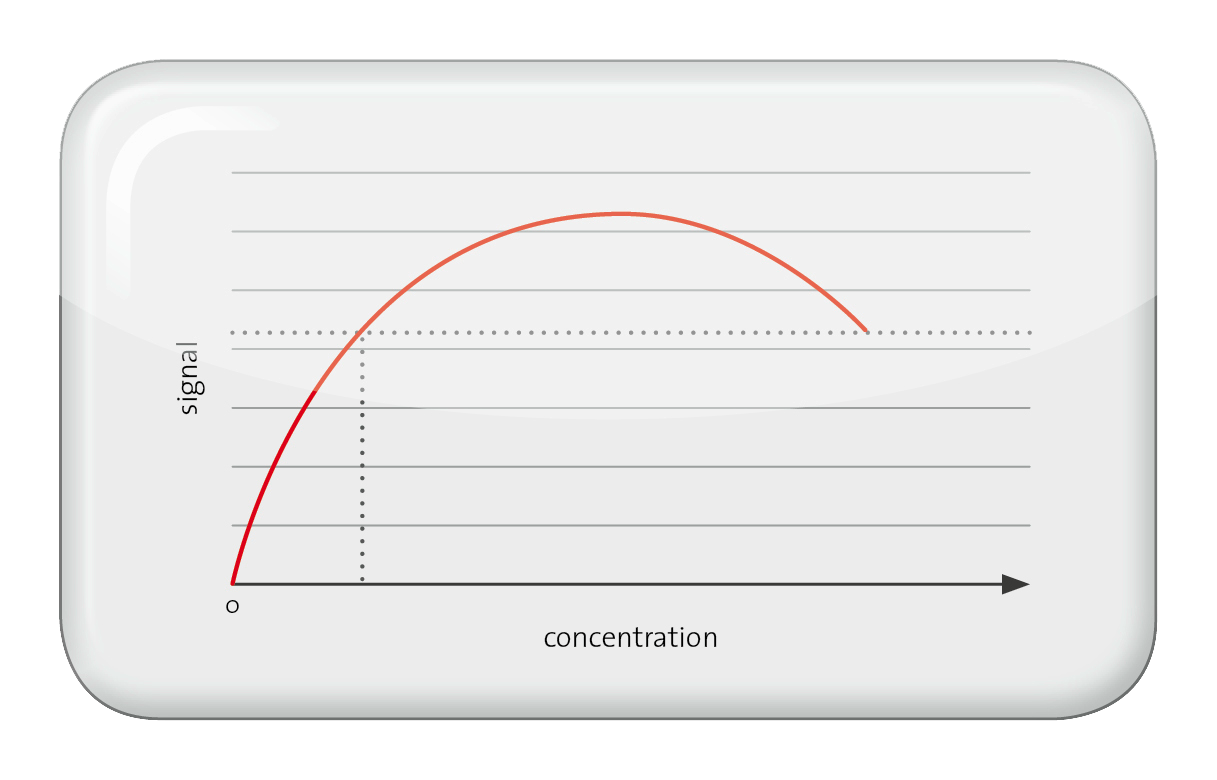Hook effect
The Hook effect or high dose Hook effect describes a wrong low measurement of analytes which are present in the specimen in a very high concentration.
If the analyte concentration is too high, all antibody binding sites are fully occupied.
Additional analyte molecules can not be measured within the limit of the binding curve.
This fact leads to wrong low results. Parallel measurements of different sample dilutions can detect a high dose hook effect and so you can adjust the measurement.
Well-known clinical parameters which are subject to high dose hook effect are: e.g. CRP, AFP, CA 125, PSA, ferritin, prolactin and TSH.




